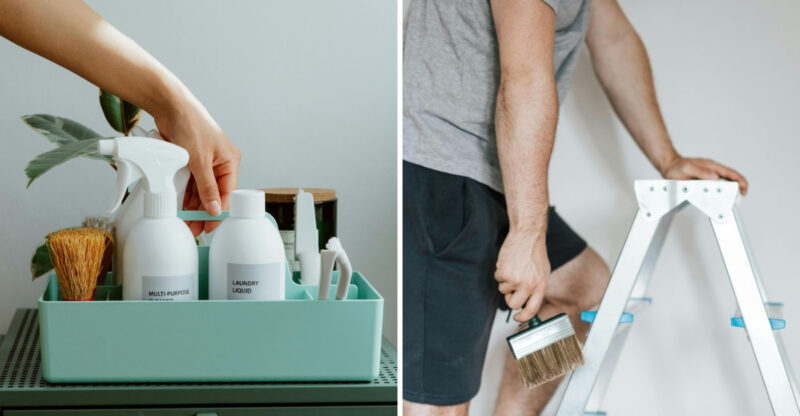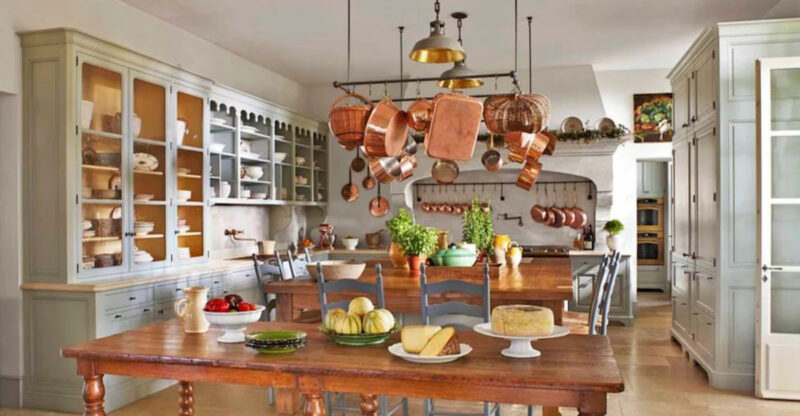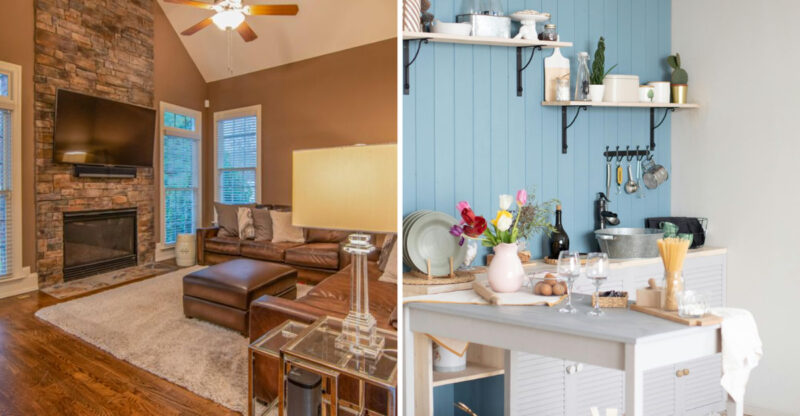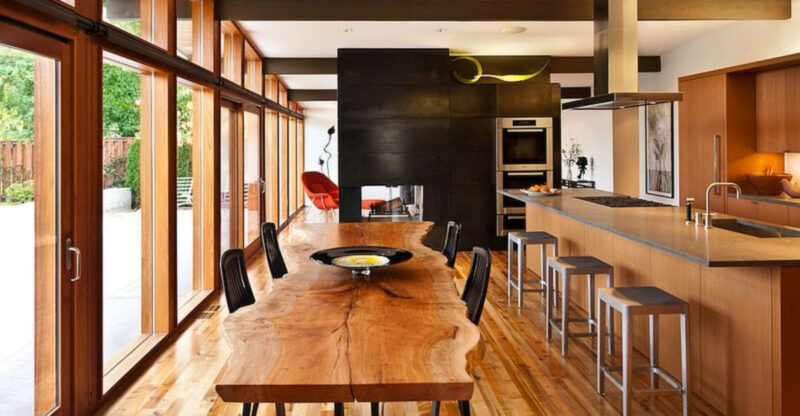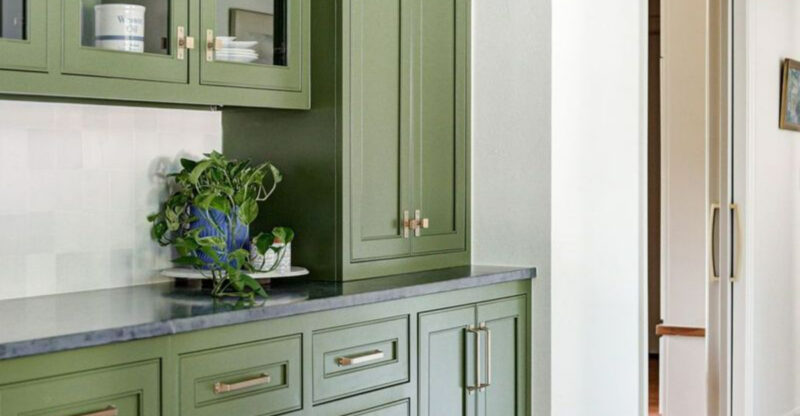12 Concrete Counter Ideas That May Be Just What Your Kitchen Needs
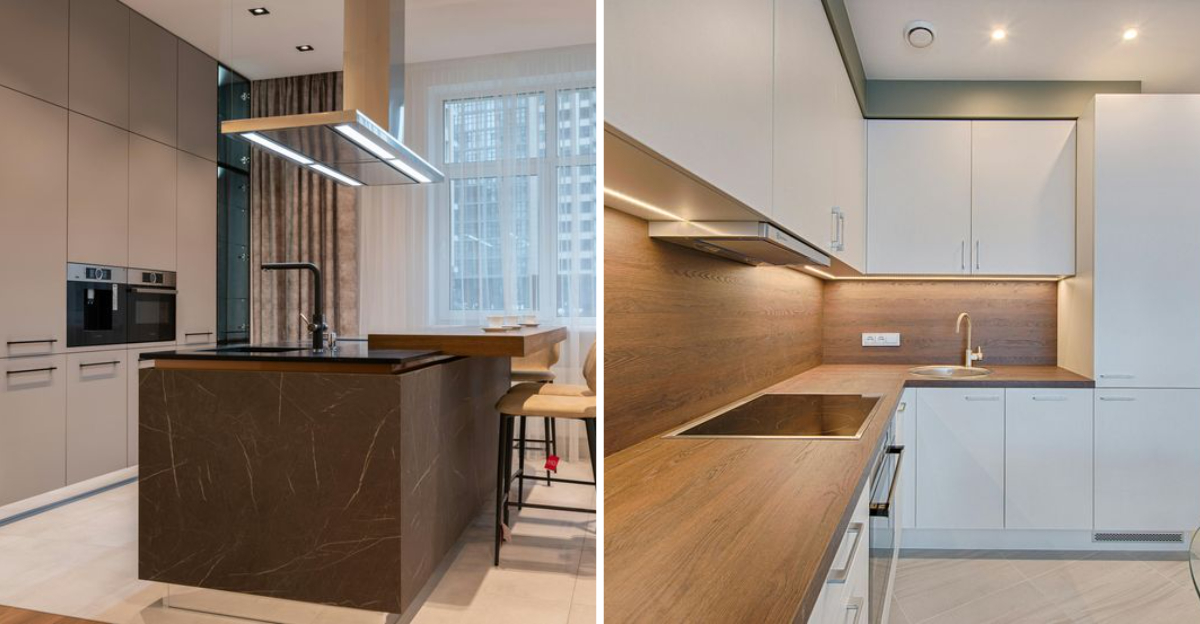
Concrete countertops have come a long way from their industrial beginnings, now doubling as stylish and durable centerpieces in contemporary kitchens.
Their versatility in color, texture, and finish allows for personalized designs that suit a variety of aesthetics. While these ideas can inspire your next project, the final look and functionality will depend on your kitchen’s layout, materials, and installation choices.
1. Polished gray concrete countertops
Gray concrete countertops with a high-gloss polish create a sleek, modern look that works in almost any kitchen style. The polishing process brings out subtle variations in the concrete’s color, giving each countertop a unique character.
I love how the smooth surface feels under your fingertips while being incredibly practical for food prep. The neutral gray tone pairs beautifully with both light and dark cabinetry, making it a versatile choice for any color scheme.
With proper sealing, these counters resist stains and scratches, giving you years of beautiful service. Many homeowners appreciate how the subtle industrial vibe adds character without overwhelming the space.
2. Concrete with embedded stones for texture
Embedding decorative stones into concrete countertops creates a stunning terrazzo-like effect that’s both artistic and functional. Small pebbles, glass fragments, or semi-precious stones can be scattered throughout the mix before curing.
When the surface gets polished, these embedded elements emerge as colorful surprises that catch the light beautifully. Your guests will definitely notice this unique feature! Each counter becomes a one-of-a-kind piece that tells a story.
If you’re feeling creative, you can even collect meaningful stones from special places to incorporate into your design. This personal touch transforms an ordinary kitchen surface into something truly special that connects to your life experiences.
3. Stained concrete in warm tones
Warm-toned stained concrete brings cozy vibes to kitchens that might otherwise feel cold or sterile. Amber, terracotta, or cinnamon-colored stains penetrate the concrete, creating depth that painted surfaces simply can’t match.
The beauty of stained concrete is how it highlights the natural variations in the material. No two counters will ever look exactly alike! These warm hues complement wooden cabinets particularly well, creating a harmonious, earthy aesthetic.
Did you know stained concrete actually becomes more beautiful with age? Unlike some finishes that deteriorate, properly sealed stained concrete develops a lived-in patina that adds character. For homes with southwestern, rustic, or Mediterranean themes, these warm-toned counters feel perfectly at home.
4. Matte-finish concrete surfaces
Matte-finish concrete countertops offer sophisticated elegance without the flashiness of polished surfaces. The subtle, non-reflective quality creates a soft appearance that feels both contemporary and timeless at once.
You’ll appreciate how fingerprints and water spots are much less visible on matte surfaces compared to polished ones. This practical benefit makes them perfect for busy kitchens where constant cleaning isn’t realistic.
Though understated, these countertops still showcase concrete’s natural beauty and subtle color variations. Matte finishes also provide slightly better grip when working with food prep, making them functional as well as beautiful. For minimalist or Scandinavian-inspired kitchens, this low-key approach to concrete delivers exactly the right aesthetic balance.
5. Concrete with built-in drainboards
Built-in drainboards molded directly into concrete countertops offer practical functionality that’s seamlessly integrated into your kitchen design. These sloped surfaces channel water back toward the sink, keeping surrounding areas dry.
What makes these so special is how they’re custom-formed during the countertop creation process. The gentle ridges and slopes are crafted specifically for your sink and space needs. Unlike add-on drainboards, there are no seams to collect grime or separate over time.
This feature works especially well for bakers who need space for cooling racks or home bartenders who mix drinks. The continuous surface also makes cleaning a breeze just wipe everything toward the sink! For smaller kitchens, this smart design element maximizes limited counter space.
6. Colored concrete countertops
Vibrant colored concrete countertops inject personality into kitchens without sacrificing durability. Unlike natural stone limited to earth tones, concrete can be tinted virtually any color from bold blues to subtle sage greens.
The coloring process happens during mixing, ensuring the hue runs throughout the material rather than just sitting on the surface. This means chips or scratches won’t reveal a different color underneath! Custom color matching lets you coordinate perfectly with existing elements in your kitchen.
For homeowners tired of playing it safe with neutral countertops, colored concrete offers a way to express creativity. Even subtle colors can make a statement when used in a kitchen island while keeping perimeter counters neutral. These eye-catching surfaces become conversation starters when entertaining guests.
7. Concrete with smooth rounded edges
Smooth rounded edges on concrete countertops soften the industrial feel while adding a touch of organic elegance to your kitchen. The gentle curves create visual interest and break away from the sharp angles typically associated with concrete.
Families with young children particularly value these rounded profiles for safety reasons. No sharp corners means fewer bumped heads or hips when moving around the kitchen! The flowing lines also make cleaning easier since there are no tight corners to trap crumbs or debris.
Though seemingly simple, achieving perfectly rounded edges requires skilled craftsmanship. The extra effort results in a countertop that feels custom-designed rather than mass-produced. These subtle curves complement both modern and traditional kitchen styles, proving concrete can be surprisingly versatile.
8. Concrete countertops with wooden inlays
Wooden inlays set into concrete countertops create a stunning marriage of industrial and natural elements. Strips of walnut, maple, or teak embedded flush with the concrete surface add warmth and organic texture to the cool material.
These inlays can serve both decorative and functional purposes. Some homeowners incorporate wooden cutting boards directly into their countertops, creating designated prep areas. The contrast between the smooth concrete and wood grain creates visual interest that draws the eye.
How amazing is it that two completely different materials can coexist so beautifully? With proper sealing, both materials remain protected from moisture and staining. This mixed-material approach works especially well in transitional kitchens that blend contemporary and traditional elements, giving you the best of both worlds.
9. Lightweight concrete slabs for easy installation
Lightweight concrete countertops solve many practical problems associated with traditional concrete. Made with special aggregates like glass microspheres or foam beads, these slabs can weigh 40-50% less than standard concrete while maintaining durability.
Your existing cabinetry won’t require reinforcement to support these lighter-weight options. This makes them perfect for renovations where structural changes aren’t feasible or desirable. Installation becomes much simpler when two people can easily lift and position a countertop section.
Despite their lighter weight, these counters don’t compromise on appearance or performance. They accept stains, polishes, and sealers just like traditional concrete. For DIY enthusiasts, lightweight concrete mixes are available that make creating your own countertops much more manageable, opening up custom concrete options to more homeowners.
10. Concrete with integrated cutting boards
Integrated cutting boards seamlessly built into concrete countertops offer smart functionality that serious cooks appreciate. Wood, marble, or composite boards sit flush with the surrounding concrete, creating a continuous work surface.
Unlike portable cutting boards that slide around, these integrated versions stay firmly in place during food prep. When not being used for chopping, they simply become part of your beautiful countertop design. The best part? You can place these cutting stations exactly where they make sense for your cooking workflow.
Some designs even include multiple integrated boards for different food types. For instance, a marble section for pastry work alongside a wooden area for vegetables. This thoughtful detail elevates both the functionality and personalization of your kitchen space, proving concrete countertops can be as practical as they are attractive.
11. Concrete countertops with waterfall edges
Waterfall edge concrete countertops create dramatic visual impact by extending the material vertically down the sides of cabinets or islands. This architectural detail makes the concrete appear to “flow” like water over the edge, hence the name.
The continuous surface eliminates visible seams between horizontal and vertical planes, creating a sculptural, monolithic look. Islands particularly benefit from this treatment, as the waterfall edges frame the cabinetry and hide appliance sides.
Though they require more concrete and skilled craftsmanship, the result is undeniably striking. The vertical surfaces showcase concrete’s texture and color variations from a different angle. For contemporary kitchens seeking that wow factor, waterfall edges transform functional countertops into architectural statements that define the entire space.
12. Polished concrete paired with dark cabinetry
Polished concrete countertops create magical contrast when paired with dark cabinetry. The light-reflecting quality of the polished surface brightens spaces that might otherwise feel heavy or closed-in with dark cabinets.
This high-contrast pairing feels simultaneously modern and timeless. The concrete’s industrial edge balances the richness of dark wood or painted cabinetry, preventing either element from overwhelming the space. Light bounces differently across the concrete throughout the day, creating subtle shifts in atmosphere.
Many designers recommend this combination for kitchens lacking abundant natural light. The reflective quality of polished concrete helps maximize whatever light is available. For dramatic effect, under-cabinet lighting accentuates the concrete’s surface variations and creates a gorgeous glow across your work surfaces.


